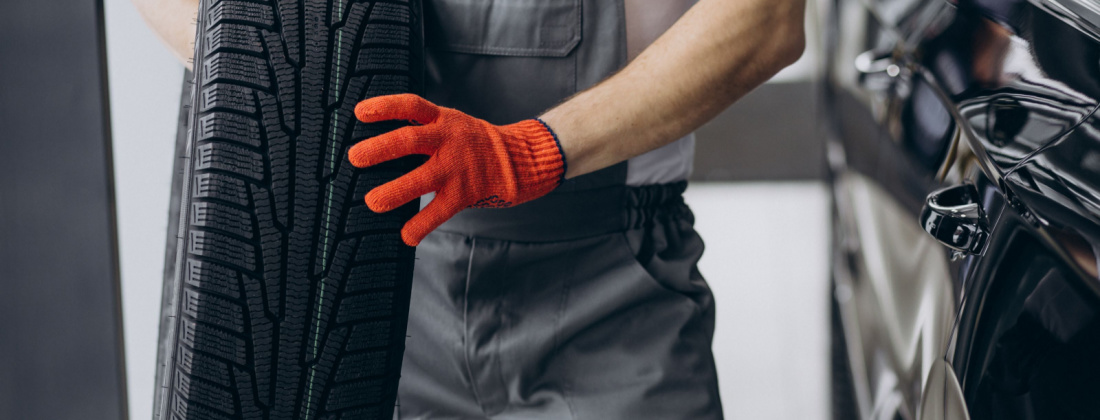What Are Tires Made of?
November 23, 2022
Tires

Why are tires black?
It’s because they’re made of soot!
Just kidding. But seriously, have you ever wondered what tires are made of? If you’ve ever been curious about the process of tire manufacturing, or just want to know what those black things on your car are made of, read on!
Tires
Tires are made of rubber, which is a natural polymer. The rubber is vulcanized, meaning that it is treated with chemicals that give it strength and durability. Tires are also made of steel and other synthetic materials.
Tires are made of rubber
Tires are made of a variety of materials, including natural and synthetic rubber, nylon, wire, fabric, and carbon black.
Natural rubber is made from the latex sap of certain tropical plants and is used in about 40 percent of all tires. Synthetic rubber, invented during World War II, is made from petroleum products and accounts for 60 percent of tire production.
The nylon cord reinforces the tire’s tread and the layer of fabric beneath the tread strengthens the tire casing. Most passenger tires have steel belts for additional strength.
Tires also contain carbon black, which gives them their black colour, reinforcing properties, and resistance to wear.
Tires are made of different compounds
Tires are made of different compounds, each with unique properties. The type of compound used in a tire affects its gripping ability, rolling resistance, wear rate, and durability. The three main components of a tire are the carcass, tread, and bead.
The carcass is the innermost layer of the tire, providing structure and strength. The tread is the part of the tire that contacts the road and provides traction. The bead is the part of the tire that secures it to the wheel rim.
The compound used in the carcass determines how well the tire retains its shape under load, how well it resists cuts and punctures, and how long it lasts. The compound used in the tread determines how well the tire grips in wet or dry conditions and how long it lasts before wearing out. The compound used in the bead determines how well the tire secures to the wheel rim.
Tires are made in different sizes
Tires come in many different sizes, and each size is designed for a specific type of vehicle. The most common tire size is the P195/75R14, which is designed for passenger cars. Other common tire sizes include the P215/75R15, which is designed for light trucks, and the P255/70R16, which is designed for heavy trucks.
Tires are also made in different widths and diameters. The width of a tire is measured in millimetres, and the diameter is measured in inches. The width of a tire affects the amount of contact the tire has with the ground, and the diameter affects the size of the wheels that the tire can be used with.
Tire Manufacturing
Tires are made of rubber, which is a polymer of isoprene. The innermost layer of a tire is the ply, which is made of fabric or steel wires. The next layer is the tread, which is made of rubber. The sidewall is the third layer, and it is also made of rubber. Finally, the fourth layer is the bead, which is made of steel.
Tires are made by vulcanization
Tires are made of vulcanized rubber – a process where the rubber is heated with sulphur, which forms cross-links between the polymer chains in the rubber. This vulcanization process strengthens the rubber and makes it more resilient to wear and tear.
Tires are made in moulds
Tires are made of rubber, which is a non-renewable resource. They are made in moulds, which gives them their round shape. The moulds are made of steel or aluminum. Inside the mould is a tread design that is transferred to the tire during manufacturing.
Tires are made in factories
Tires are made of synthetic rubber, natural rubber, fabric, and wire, and are vulcanized, or cured, with heat and chemicals. The curing process vulcanizes the rubber, making it stronger and more resistant to heat and abrasion.
Tire factories receive synthetic rubber, natural rubber, fabric, and wire from suppliers. Synthetic rubber is made from petroleum products and gives tires strength and durability. Natural rubber comes from trees and gives tires elasticity. The fabric is usually a nylon cord or rayon cord reinforced with steel wire for strength.
The first step in making a tire is building the “carcass,” which is the foundation of the tire that will support the weight of the vehicle. To build the carcass, workers start by wrapping layers of fabric around central metal cables, called “beads.” The cords in the bead give the tire strength so it can be mounted on a wheel rim.
After the carcass is built, workers apply layers of rubber over it. Some tires have a layer of nylon or other synthetic material between the carcass and the tread to prevent punctures. The rubber used in most tires is a mixture of natural and synthetic rubbers because each type has specific properties that are necessary for a quality tire.
The final step in making a tire is vulcanization, which is a process that uses heat and chemicals to strengthen the tire structure and make it more resistant to abrasion and heat damage.
Rubber Tire
Tires are made of rubber, which is a natural polymer. Polymers are long chains of molecules. The rubber molecules are bonded together by chemical cross-linking. The tire manufacturing process begins with the vulcanization of the rubber. Vulcanization is a process where the rubber is treated with sulphur, which causes the rubber to become harder and more resistant to wear and tear.
Rubber tires are made of vulcanized rubber
Most tires are made of vulcanized rubber. This is a process in which the rubber is treated with sulphur and other chemicals to give it strength and durability. The vulcanization process was invented in 1839 by Charles Goodyear, and it revolutionized the tire industry.
Tires are made of three main parts: the tread, the carcass, and the inner liner. The tread is the part of the tire that comes into contact with the road. It is made of a special compound that is designed to resist wear and tear. The carcass is the part of the tire that supports the tread. It is made of layers of fabric or steel cord that are bonded together with rubber. The inner liner is a thin layer of rubber that prevents air from escaping from the tire.
Tires are manufactured using a variety of methods, depending on the type of tire being made. For example, passenger car tires are generally made by extrusion, in which raw rubber is forced through a die to create the desired shape. truck tires are generally made by moulding, in which heated rubber is placed in a mould and allowed to cool and harden.
Rubber tires are made in moulds
Moulding rubber tires is a process that begins with the creation of the mould, called a tool. Once the tool is created, it must be installed in a tire moulding machine. Then, heated rubber is injected into the mould under high pressure. The rubber cools and takes on the shape of the mould cavity. After cooling, the tire is ejected from the mould cavity, and the process begins again.
Rubber tires are made in factories
Most tires are made in factories. The first step is to create the prepared rubber. The prepared rubber is a mixture of natural and synthetic rubber, carbon black, oils, and other chemicals. This mixture is then fed into a machine called an extruder. The extruder heats the mixture and forces it through a small opening, or die. As the rubber comes out of the die, it is cooled and cut into small pieces called “biscuits.”
Tires Near Me
It’s no secret that rubber tires are made of, well, rubber. But have you ever wondered what else goes into the manufacturing of a tire? Tires are made of a variety of materials, including natural and synthetic rubber, wire, fabric, and carbon black. In this article, we’ll take a closer look at what tires are made of and how they’re made.
Tires are sold by retailers
Tires are generally sold by retailers, such as auto parts stores or tire dealers, who also provide installation and other services. The size of the tire, as well as the brand and model, will affect the price. Many retailers also offer discounts on sets of four tires or more.
Tires are sold by wholesalers
Tire manufacturing is the process of making tires. Tires are sold by wholesalers who buy in bulk from tire manufacturers. The first step in the tire manufacturing process is to make the rubber that will be used to make the tire. Rubber is made from a variety of natural and synthetic materials. The next step is to add reinforcing materials to the rubber to make it stronger. These materials can include steel, nylon, or synthetic fibres. The rubber and reinforcing materials are then moulded into the shape of a tire. The last step in the tire manufacturing process is to vulcanize the tire. Vulcanization is a process that uses heat and pressure to bond the materials together and makes them more durable.
Tires are sold by manufacturers
There are three main types of tires: passenger car tires, light truck tires, and heavy-duty truck tires. Tires are manufactured by large companies all over the world. The United States, Japan, and Germany are among the leading tire-producing nations.
Tires are made of rubber, which is a material that is derived from tree sap. The sap is collected and then processed to create the rubber that is used in tires. In addition to rubber, tires also contain reinforcement materials, such as steel or nylon cord, to add strength; filler materials, such as carbon black or silica, to provide stiffness; and chemicals, such as sulphur or oils, to keep the rubber from deteriorating.
Back

